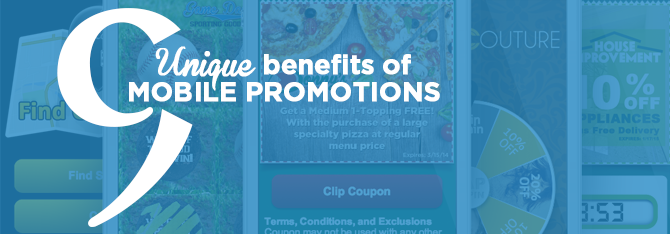In his book, The Insider’s Guide to Mobile, Tomi T. Ahonen’s describes the three waves of mobile. The first was Communication, second was Content. Now, we have entered the third wave known as ‘Context’, and this wave is gaining momentum. The use of context is restructuring mobile services to fully utilize data points to optimize the service experience for users. Contextual data points are location, proximity to objects, proximity to friends – all relating to your direct surroundings which is fully integrated in today’s smartphones.
What has the third ‘wave’ of mobile provided for mobile marketing organizations and why does it matter to today’s consumer facing businesses?
With more than 6 billion mobile phones in the world – one for every person over 15 – there exists a virtual customer pipeline that is available to retail organizations 24/7 providing these 9 unique mobile benefits:
1. Mobile is the First Personal Mass Media
Back in 2006, Wired reported that 63% of the population will not share a phone, even with their spouse. Now that is personal. As recently as last year, a Morgan Stanley report stated that 91% of smartphone users keep their phones within arm’s reach 24/7. As the third wave of mobile “context” washes over, mobile will become ever more personal.
2. Always Connected
Often times, our smartphone is also our alarm clock, so it’s the last thing we look at before we go to sleep and the first thing we look at when we wake up. If we leave home without our wallet, most will not go back for it. However, if we leave without our phone, most will go back to retrieve the phone. Mobile is the only medium that can quench our thirst for “hypermobility“.
3. Always Carried
9/10 of us sleep with our smartphone next to us. Our mobile devices are like a 24 hour news service, and when tailored to our specific interests, they make for the perfect 24 hour information service for news, surveys, sale promotions, and more.
4. Built-in Payment Channel
This is one of the biggest reasons why mobile content is of far greater value than fixed web content, and why mobile device owners love mobile. The web in its native form cannot handle money or payments, requiring alternative methods like PayPal accounts, or using credit cards. With the advent of technologies like NFC, mobile smartphones have the potential to replace cash and credit cards.
5. Available at Creative Impulse
When we have an instance of creative inspiration, our laptop may be tucked safely inside our briefcase, our digital camera back at home. However, the camera on our mobile device (smartphone, or laptop) is always with us, ready to go in a moment of inspiration.
6. Has Most Accurate Audience Info
Any attempt at gathering information for TV viewers only catches 1% of audience data. Accurate collaborative mobile data analysis provides feedback to accurately influence the direction and design of mobile surveys, in-store visits, and interactive marketing promotions. We are now in the age of user-generated advertising. What? The user requests advertising? Yes! Simply, the recipient of an ad is convinced to join and co-create the ad experience, advising the advertiser as to what color they like, which clothes they prefer, which rock band they favor—see where we are going?
7. Captures Social Context of Consumption
Only on mobile devices can we capture a social context of the consumption of mobile ads, promotions, surveys, or purchases. Not just what we consume, but with whom we have shared this experience, or recommendation. The social context information is captured immediately on the network – and companies are deploying solutions to map out the communities and the biggest influencers. This is to data mining, what blogs, YouTube and Facebook were to the web. This is huge, and it can only be done through mobile.
8. Enables Augmented Reality
Augmented reality (AR) is a technology enabling mobile devices to recognize live objects and then activate video, or graphics. AR has opened a new era of marketing potential for mobile marketers. Many refer to AR as “interactive print,” and AR is finding the greatest consumer-market penetration in the print magazine industry. These programs can activate content on smartphones, or on tablets that can be viewed as the device hovers over certain print, making print an essential element of the experience.
9. Offers Digital Interface (to real world)
Today’s mobile marketers can utilize the digital interface benefit through SMS, or QR codes, and new emerging technologies Augmented Reality (AR) and Near Field Communication, or NFC. We mentioned AR above. Near Field Communication is used by establishing radio communication with each other by touching them together or bringing them into proximity, usually no more than a few inches.
So What are You Waiting For?
The latest numbers on mobile advertising show that the mobile marketing is growing at an amazing rate, with 85% of all marketing professionals managing some form of mobile promotions or advertising. Mobile marketing is changing the rules of the retail marketing game, and retail organizations are aggressively driving their business growth through mobile marketing strategies. The time is now to provide mobile promotions to your audience!

